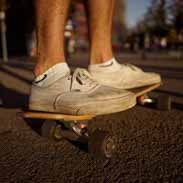PSY-425 STUDY GUIDE CHAPTER 16 J. COHEN – Flashcards
Unlock all answers in this set
Unlock answersquestion
Monitor eye movements
answer
1. The best way to measure an infant's acuity is to
question
Have contours
answer
2. Infants tend to look more at objects that
question
Focuses on answering the question "Can an infant tell the difference between two stimuli?"
answer
3. Testing infant acuity
question
Stimulus equally.
answer
4. One potential limitation of the preferential looking technique is
question
Gratings
answer
5. The stimuli used in the preferential looking technique of testing infant acuity are
question
Six months old.
answer
6. Acuity develops to almost 20/20 vision by the time the infant is
question
The visual cortex of the newborn is only partially developed
answer
7. Which of the following is a reason for the poor acuity of newborns?
question
Spatial frequency
answer
8. Contrast sensitivity functions are a plot of contrast sensitivity as a function of
question
Low frequencies better than high frequencies.
answer
9. The contrast sensitivity function for a 1-month-old infant shows that infants can perceive
question
Can be done by infants as young as three- to four-months old
answer
10. The ability to make visual discriminations between cats and dogs
question
The infant can tell the difference between the habituated stimulus and the new stimulus.
answer
11. When an infant exhibits dishabituation, the researcher concludes
question
The 480 nm stimulus.
answer
12. Bornstein et al. habituated a four-month-old infants to a 510 nm ("green") stimulus, the presented a 480nm ("blue") stimulus or a 540nm ("green") stimulus. The infants in this study dishabituated to
question
Can be tested using random dot stereograms.
answer
13. The ability to use binocular disparity as a depth cue
question
3 ½ to 6 months.
answer
14. Fox et al. (1980) found that the ability to use binocular disparity develops between
question
Wooden spools of different sizes; reaching
answer
15. In their study on infant use of familiar size as depth cue, Granrud et al. used ________ as the stimuli, and ________ as the dependent measure.
question
Binocular disparity
answer
16. Ambrozia is a 4-month-old infant. Which depth cue is she most likely able to use?
question
Two-days-old
answer
17. The preferential looking technique showed that infants as young as ______ will look at their mother's face rather than a stranger's face.
question
The contrast between the mother's dark hairline and the light forehead.
answer
18. Research has shown that an infant can visually recognize his/her mother's face from
question
Special mechanism for perceiving faces.
answer
19. Farah's case study of Adam, a prosopagnosic, is used as support for
question
Have more elements in the top-half.
answer
20. Turati et al (2002) showed that infants prefer stimuli that
question
Movement
answer
21. Which factor is important for a five-month-old to perceive occlusion?
question
Can be accomplished by two-month-olds.
answer
22. The ability to perceive a rod as being continuous behind an occluding block
question
Perceivers tended to make more horizontal eye movements.
answer
23. Johnson et al. (2004) presented moving occluded rods to 3-month-old infants, and classified the infants as "perceivers" or "non-perceivers" of a unified, occluded rod. The main finding of the study was
question
Is similar to the audibility curve for an adult
answer
24. The audibility curve of a 6-month-old infant
question
Pattern of nipple sucking
answer
25. DeCasper and Fifer used ______________ as the dependent variable to test if two-day-old infants could identify the sound of the mother's voice.
question
Hearing the mother talk while in the womb.
answer
26. Research supports that an infant's ability to recognize the mother's voice is due to
question
The original version, as it had been read to them prenatally
answer
27. If a pregnant mother reads the original version of The Cat in The Hat aloud while pregnant, which version of The Cat in The Hat would the infant prefer after birth?
question
One-month-old.
answer
28. The ability to categorize speech sounds is found in infants as young as
question
Be able to discriminate between these two phonemes.
answer
29. Masakazu is a 4-month-old Japanese infant. When presented the phonemes /r/ and /l/, he will
question
A visual image of the shape of the pacifier.
answer
30. A one-day-old infant is able to match the feel of a pacifier's shape in his/her mouth to
question
Newborn's recognition of the mother's face.
answer
31. Infant intermodal perception studies are used to explain
question
Responds with a facial expression that displays disgust.
answer
32. When an eight-hour-old newborn is given a concentrated shrimp odor to smell, the newborn
question
Salty
answer
33. Which of the following tastes do newborns NOT react to?
question
Using body movements and facial expression as a dependent measure, and make sure that the infant is responding the odor, and not irritation of the nasal membranes. (All of these are methodological issues)
answer
34. A methodological issue in testing infant olfaction is
question
6-month-old humans
answer
35. According to Pascalis et al. (2002), which of the following would be able to discriminate between pairs of monkey faces?



